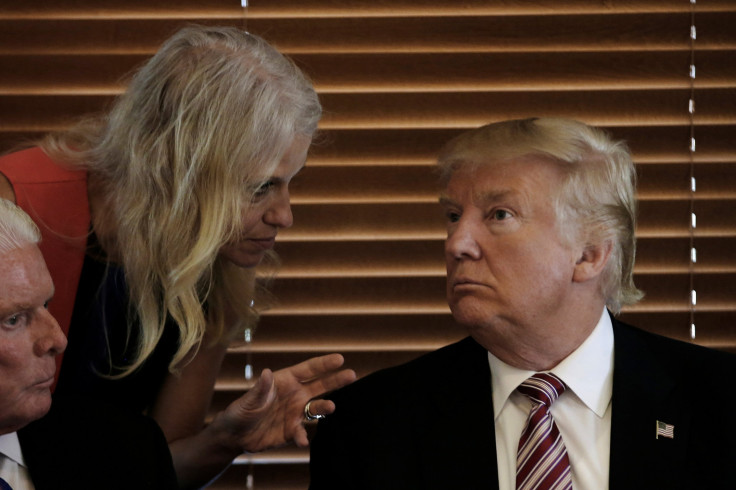What Is Gaslighting? Trump Manipulates America By Lying, Political Pundits Say

“Gaslighting” is a favorite term of political pundits and media analysts. You may have read about in a Teen Vogue article called “Donald Trump is Gaslighting America” published in December, or in a CNN op-ed from January, or perhaps political analyses from Salon and Slate from October, when Trump was still running for president.
Or you have have seen the term on Twitter, where people are not only blaming Trump for gaslighting, but also accusing his press secretary Sean Spicer and counselor KellyAnne Conway of it, too.
The lies, propaganda and gaslighting of the American people from the office of the press secretary....@seanspicer is a disgrace #hardball
— Nataya (@Nataya) February 3, 2017
The term “gaslighting” comes from the 1938 play “Gas Light” — known also as “Angel Street” — by Patrick Hamilton. A husband, Jack, manipulates his wife, Bella, into thinking she is becoming insane by playing tricks on her. For instance, he hides objects, but blames Bella for misplacing them and dims the gas light in the house, but tells Bella she is imagining it.
In the 1944 film version of the story, Ingrid Bergman says she’s been driven “out of my mind!”
The term has since been used in clinical psychology, in which an abusive partner tortures the other by toying with the victim’s mind. Gaslighting is, in effect, emotional and psychological abuse. The victim starts to question his or her sanity.
Now, gaslighting is being used in political discourse, too.
The term gaslighting as a political phrase didn’t start with Trump —in a Daily Kos op-ed from 2012, the author writes, “Americans have become the victims of political gaslighting.” However, since Trump ran for office, political pundits are using the term with more frequency.
Critics say that Trump’s back-and-forth on his actions, such as mocking a disabled reporter and then denying it, is gaslighting.
And he doesn’t just contradict his own actions — he disputes information that has been proven to be true without providing evidence otherwise. He claimed in July that 30 to 34 million illegal immigrants are in the U.S., which is about three times the actual number. In June, he said there is “no system to vet refugees” from the Middle East, when the system is actually long and stringent. He alleged in June that “crime is rising” — actually, crime rates have been falling for the past quarter-century.
“At the hands of Trump, facts have become interchangeable with opinions, blinding us into arguing amongst ourselves, as our very reality is called into question,” wrote Lauren Duca in a Teen Vogue article in December.
The misinformation from Trump and his administration is, perhaps, one of the reasons that Trump's approval rating sunk to record lows last week.
© Copyright IBTimes 2025. All rights reserved.






















